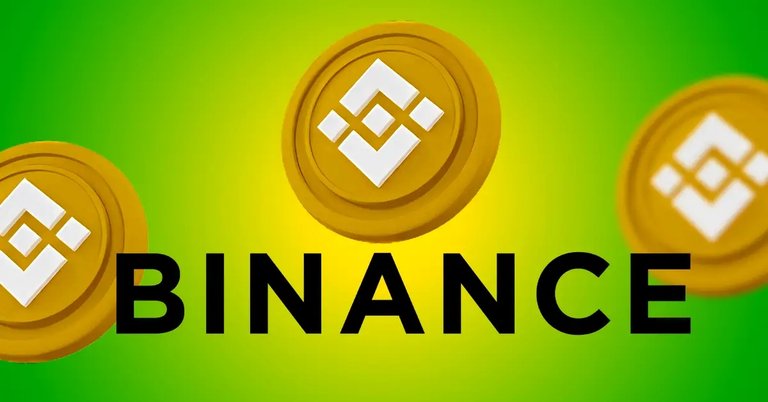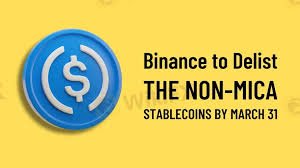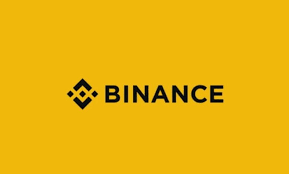Binance to Delist Nine Stablecoins in Europe as MiCA Regulations Reshape the Crypto Landscape

Binance has announced it will delist nine stablecoins, including USDT and DAI, for European users by March 31, 2025, in response to the European Union's Markets in Crypto-Assets (MiCA) regulations. This move reflects an industry-wide shift as crypto exchanges adapt to the EU's stricter financial standards for digital assets.
The delisting will impact trading pairs within the European Economic Area (EEA), requiring users to reevaluate their holdings, trading strategies, and liquidity management. Binance has encouraged users to convert affected stablecoins via Binance Convert to comply with the new rules.
Which Stablecoins Are Being Delisted?
In a March 3 press release, Binance confirmed that the following stablecoins will be removed from its European platform:
- Tether (USDT)
- Dai (DAI)
- First Digital USD (FDUSD)
- TrueUSD (TUSD)
- Pax Dollar (USDP)
- Anchored Euro (AEUR)
- TerraUSD (UST)
- TerraClassicUSD (USTC)
- PAX Gold (PAXG)
Despite this sweeping removal, Binance assured that compliant alternatives, such as USDC, Eurite (EURI), and fiat trading pairs (EUR), will remain available for EEA users.
The exchange emphasized that these stablecoins fully align with MiCA’s new reserve requirements, allowing them to continue supporting trading, deposits, and withdrawals.
MiCA’s Reserve Requirements and the Stability Debate
The MiCA regulatory framework, which took effect on June 30, 2024, mandates that stablecoin issuers hold a 1:1 reserve in liquid assets to back their tokens fully.
This regulation is designed to:
✔ Enhance financial stability by ensuring every stablecoin remains redeemable at face value.
✔ Reduce the risk of depegging, as seen in past collapses.
✔ Require major issuers to hold up to 60% of reserves in traditional banks.
However, not all stablecoins meet these stringent guidelines. While issuers like Tether (USDT) and MakerDAO (DAI) claim to be fully backed, their reserve composition remains unclear under MiCA’s stricter definitions.

Tether CEO Paolo Ardoino has criticized MiCA’s requirement for issuers to hold 60% of reserves in bank deposits, warning that:
- Large deposits in banks (above €100,000) are uninsured, increasing financial exposure in case of a bank collapse.
- The traditional banking system operates on a fractional reserve model, meaning banks reinvest most customer deposits rather than keeping them liquid.
- If stablecoin issuers are forced to store large portions of their reserves in banks, they could face liquidity issues during financial crises.
This has sparked heated debates over whether MiCA’s framework genuinely strengthens stability or simply shifts risk into the traditional financial system.
Algorithmic Stablecoins Face Permanent Exclusion
MiCA's rules completely prohibit algorithmic stablecoins, such as DAI and the failed TerraUSD (UST), as these rely on algorithmic mechanisms rather than fiat-backed reserves.
- The 2022 collapse of TerraUSD (UST) demonstrated how algorithmic stablecoins can fail to maintain their peg, causing catastrophic market losses.
- Because of their higher systemic risk, MiCA regulations ban their use in regulated markets like the EU.
- As a result, Binance and other major exchanges have preemptively removed them to ensure compliance.
This regulatory-driven divide between compliant and non-compliant stablecoins is reshaping the crypto sector, forcing issuers to either adapt or exit the European market.

How Major Crypto Exchanges Are Reacting
Binance’s move is part of a broader industry trend, with other major exchanges also adjusting their policies:
- Coinbase began removing non-compliant stablecoins ahead of MiCA enforcement, urging users to switch to Circle’s USDC and EURC, which meet MiCA standards.
- Kraken is phasing out USDT and other stablecoins, halting spot trading by March 24, 2025, with automatic conversions for remaining holdings on March 31, 2025.
- Crypto.com has delisted USDT and nine other tokens for European users, stopping deposits as of January 31, 2025, with full delisting scheduled for March 31, 2025.
These actions indicate that compliance with MiCA is not optional, and exchanges must align with regulatory mandates or risk losing access to the European market.
The Road Ahead: A New Era for Stablecoin Markets
As stablecoin regulations tighten, the industry faces a defining moment.
✔ Exchanges and issuers must restructure their reserve strategies to comply with MiCA.
✔ Traders and investors must reassess their asset holdings, shifting toward fully regulated stablecoins.
✔ The crypto market is moving toward greater institutionalization, prioritizing financial security over absolute decentralization.
While some argue that MiCA regulations may stifle innovation, others see this as an opportunity to build a more stable and transparent financial ecosystem.
As the March 31, 2025 deadline approaches, the future of stablecoins in Europe will be defined by how well issuers and exchanges adapt to this regulatory shift—and whether they can do so without compromising liquidity, security, and decentralization.
https://www.reddit.com/r/WallStreetBetsCrypto/comments/1j3qgow/binance_to_delist_nine_stablecoins_in_europe/
The rewards earned on this comment will go directly to the people( @loading ) sharing the post on Reddit as long as they are registered with @poshtoken. Sign up at https://hiveposh.com. Otherwise, rewards go to the author of the blog post.